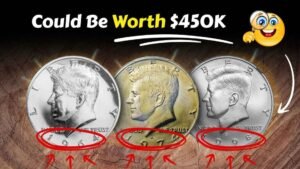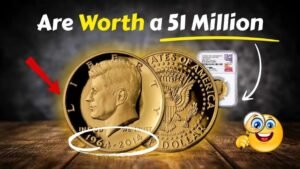What if the change jingling in your pocket held a secret worth nearly $1 million? Believe it or not, a Lincoln Wheat Penny valued at $950,000 could still be floating around in everyday transactions. The thrill of this discovery keeps collectors and treasure hunters checking their pennies — and one glance could change your life.
What Is the $950K Lincoln Wheat Penny?
The Lincoln Wheat Penny was minted between 1909 and 1958, easily identified by the wheat stalks on the reverse side. Most are common, but certain rare minting errors or limited production runs make specific coins incredibly valuable. Among these, a few rare variants have sold for jaw-dropping prices — with one penny valued close to $950,000.
The Surprising History Behind the Wheat Penny
Introduced in 1909 to honor Abraham Lincoln’s 100th birthday, the Wheat Penny was the first U.S. coin to feature a real person. The earliest issues, especially the 1909-S VDB, were produced in low numbers, making them highly collectible. Over the years, minting errors, like doubled dies or steel wartime versions from 1943, turned ordinary pennies into rare treasures.
Notable Rare Lincoln Wheat Pennies
| Year & Mint Mark | Notable Feature | Estimated Value |
|---|---|---|
| 1909-S VDB | Designer initials, limited mintage | $50,000+ |
| 1943 Copper | Struck in copper instead of steel | $250,000+ |
| 1944 Steel | Wrong planchet error | $200,000+ |
| 1955 Doubled Die | Double image on obverse | $50,000–$200,000 |
| 1943-S Bronze | Extremely scarce | $950,000 |
Why This Penny Is So Valuable Today
The rarity factor is everything. A normal wheat penny might fetch only a few cents, but a scarce variant like the 1943 bronze penny or the 1944 steel penny is considered the “holy grail” of coin collecting. With collectors willing to pay top dollar, the value can soar into the hundreds of thousands. The fact that some could still be in circulation makes the hunt even more thrilling.
How to Check Your Change for a Rare Wheat Penny
- Look at the Date — Key years include 1909, 1943, 1944, and 1955.
- Check the Mint Mark — Coins from San Francisco (“S”) and Denver (“D”) can be rarer than Philadelphia (“no mint mark”).
- Spot Errors — Doubled lettering, odd colors, or unusual metals signal rarity.
- Test with a Magnet — 1943 pennies should be steel (magnetic). If yours isn’t, you may have a fortune.
Quick Guide — Ordinary vs. Rare Wheat Pennies
| Feature | Common Wheat Penny | Rare Wheat Penny |
|---|---|---|
| Metal | Copper (1909–1942, 1944–1958) | Bronze (1943 error), Steel (1944 error) |
| Value | 2¢ – $5 | $50,000 – $950,000 |
| Errors | None | Doubled dies, wrong planchet, misprints |
Fascinating Facts About the Wheat Penny
- The 1943 copper penny is so rare that only about 40 are known to exist.
- A single 1943-S bronze penny sold for $1 million at auction.
- Even slightly rare versions can fetch hundreds of times their face value.
Expert Tips for Collectors
- Preserve Condition — Store in a coin holder to prevent wear.
- Get a Professional Appraisal — PCGS and NGC grading can authenticate and boost resale value.
- Stay Updated on Auctions — Rare coins often surface at high-profile sales where bidding wars drive prices up.
FAQs
Q: Can I really find a $950K Wheat Penny in circulation today?
A: Yes, though extremely rare, a few still slip through in everyday change.
Q: How do I know if my penny is valuable?
A: Check the year, mint mark, and look for unusual metal composition or doubled designs.
Q: Where can I sell a rare penny?
A: Reputable auction houses, certified dealers, or coin shows. Avoid casual online buyers who may undervalue it.
Conclusion: A Million-Dollar Coin in Your Pocket?
The Lincoln Wheat Penny valued at $950K proves that incredible treasures can hide in plain sight. What seems like ordinary pocket change could actually be a once-in-a-lifetime discovery. So, the next time you receive a handful of pennies, don’t ignore them — inspect carefully. Your small coin could hold a history-making fortune.




